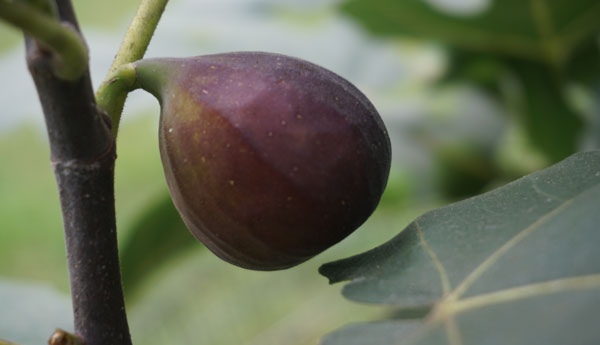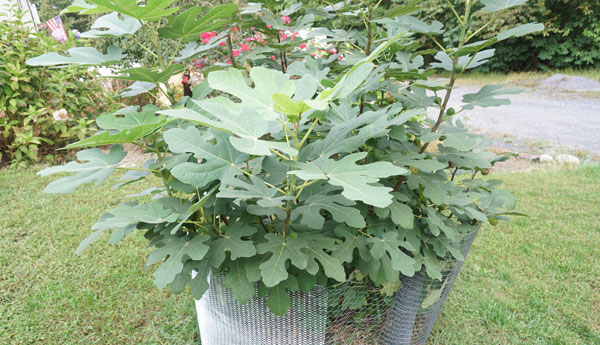
Figs. While commonly associated with decadent Roman living and the diets of the well-to-do, the ancient fig is actually far less delicate, and far easier to grow than what you’ve probably heard. Originating somewhere in Mesopotamia, the fig has been a delicacy for millennia, serving both as a standalone treat, and a natural sweetener. In fact, some interpretations of the Bible say that the fig, not the apple, was the “fruit” that tempted Eve. Christianity isn’t the only religion with a potential tie to this fruit, either. It, along with Hinduism, Buddhism, Judaism and Islam see the fruit as a symbol of peace and fertility. Its domestication predates most of these religions however, with excavations uncovering the remains of fig trees in Neolithic sites 5000 years old. Some historians even consider it the first domesticated crop. Read on for more facts about this fascinating fruit, including how you may be able to work it into your homestead.

- Figs are deciduous trees, and can live as long as 100 years, growing to a maximum height of 50-feet tall. Most will top out around 20-30. Despite this, the tree will generally spread far wider than it is tall, almost resembling more of a bush.
- Technically speaking, figs aren’t actually fruit, despite their taste and appearance. The scientific name for the growth is a syconium, which means it is actually a flow that grows internal to a sac. That’s right, when you eat a fig, you’re actually eating an inside-out flower!
- Figs tend to flourish in hot, dry climates, but don’t let this discourage you from growing them elsewhere! I refrained from planting a fig for quite some time, as I had heard the cold winters where I live, in the mountains off the Mid-Atlantic seaboard, would kill them off. Turns out, however, as long as you protect the roots in the winter with an insulating layer of straw, you can reap quite a bounty every summer (the fig tree you see in this article resides in my yard). In optimal conditions, their fruiting cycle lasts from 120 to 150 days. Sunlight is vital though, and plants should get 8 hours of direct light every day.
- There are hundreds of varieties of figs worldwide, but most found in the U.S. are Black Mission, Brown Turkey, Kadora or Calimyrna. Generally oval or pear shaped, figs come in a range of colors, and can be eaten raw or even grilled.
- While figs will grow in a wide range of soil types, they prefer a loamy mix of sandy clay, and can also grow in fairly rocky areas up to around 5,500 feet. A soil depth of 3 to 5 feet is recommended.
Sound like an interesting plant to add to the edible section of your garden? Exotic as they may sound, figs can be found in most garden centers, and can even be started in pots, until you get the hang of caring for them (this will, of course, limit the size of growth). Stay tuned for some excellent fig-related recipes to be posted in the future.
A humble homesteader based in an undisclosed location, Lars Drecker splits his time between tending his little slice of self-sustaining heaven, and bothering his neighbors to do his work for him. This is mainly the fault of a debilitating predilection for fishing, hunting, camping and all other things outdoors. When not engaged in any of the above activities, you can normally find him broken down on the side of the road, in some piece of junk he just “fixed-up.”

kimberpross says
I had a Brown Turkey Fig in my yard in Montgomery, Alabama. It was at that time about 10 feet tall and would be loaded with figs each year. I’m a Midwesterner and not being familiar with them I had a native Bama lady collect them each year and she would make preserves with them and share a jar or two. It looked like peach preserves and tasted much like honey.
Dave Sargent says
Figs grow hearty in our backyard in Western TN and are wonderful for jams, preserves and just plain wonderful to eat. Having never done it, if you leave a fig go, will it flower, as it were, from the inside out or are you saying that the fig IS the inside out flower?
Dave Cole says
That’s a great looking Fig “Bush” you have in your yard! We are trying to get a few to take in our Mid-Atlantic Region (SWVa) also. My Mother had one (same area) she transplanted from her homeplace in GA. It was what we aspire to have – it was low, wide, and had many figs every year! After several attempts, we think we have a good start on ours with a very tall “tree’, and several smaller, lower growing specimens (more recently planted).
We want to trim back the taller “tree” (main trunk is 2-1/2′ & larger) diameter, and encourage the smaller to continue to “bush” out and get thinker as they grow.
Our question is when is the best time to trim them back? How far should they be trimmed (it seems my Mother would dramatically trim hers and it would return to it’s shape. She never bedded hers in winter but this may be due to it”s maturity. We plan to bed ours in straw over the winter….
Any advice you can offer on trimming the Fig “trees” back, or topping the smaller specimens would be greatly appreciated!
It’s good to read you have good luck growing these in our similar area!
Dave E. Cole
pardnah2u@comcast.net..
My question is
Lars Drecker says
Hey Dave! Sorry for the delay, I was on a small vacation from the site. Every year, after the plant becomes dormant (after the first freeze), I cut it back to 24” inches from the ground. The main trick, as I’m sure you know, is to remove all dead and small secondary branches. With the main branches, trim them back anywhere from a third to a quarter. This will help with fruit production. In short, it sounds like yall are already on the right track! As far as the bedding, I do that to keep the roots from freezing late November to mid-May. I keep it on until this late in the season, as I have had the plant die due to an April freeze, following a warm period that awakened it from dormancy. The entire plant turned black, Fearing the worst, I cut it to the ground, but new shoots appeared late that summer and it grew anew. While maturity may help prevent the roots from freezing, its also possible that Georgia doesn’t experience the sort of sustained cold my section of the country does (I’m about 3 states north of there, in the mountains).
Hope this helps!
-Lars